The Polyculture Market Garden Study - Results from Year 3 - 2017
This is the third year of our Market Garden Polyculture Study. Our trials include a comparison between growing vegetables in polycultures and growing them in more traditional blocks as well as our experimentation with annual vegetable polycultures.
Below you will find an overview of the trial garden and the polycultures we are growing, a description of what we record and the results.
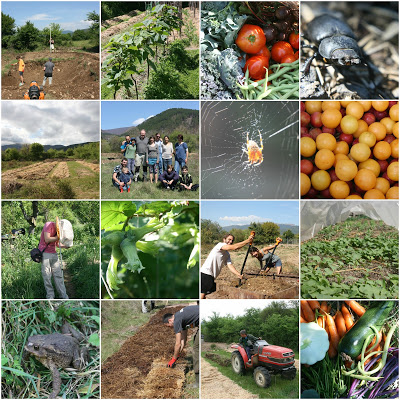
Some photos from this season -and here's a slideshow from the season
First of all we'd like to say a huge thank you to the team of volunteers that joined us for the study this year and that make it possible for us to carry out our experiments and research. It was a pleasure to work together with you :)
Thank you Fergus Webster, Gabriele Landi, Chris Mallorie, Abigail and Ed, Ute Villavicencio, Charlie Morton, Chris Kirby-Lambert, Simon, Kartini, Karl and Marlene, David Pavlasevic, Kathy Donor, William Kunkle, Ben Matz and Rosa Van Giessen. You guys are awesome!
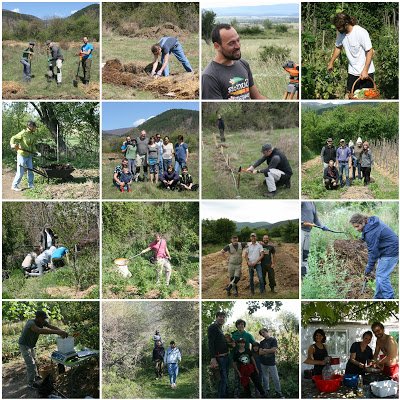
Polyculture Study Team 2017
Garden Overview
Climate: Continental Temperate
Latitude: 42°
Elevation: 565 m
Average Annual Rainfall: 588.5 mm
Co-ordinates: 42.71259, 25.32575
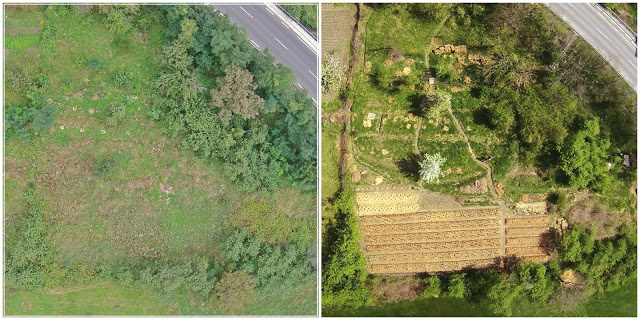
The six longer beds in the left hand corner of the photo on the right are the trial beds (the Aceaes) and the focus of the study.
Click here for the Polyculture Market Garden location (labelled as Paulownia Garden on our Project map)
Garden area: 256.8 m2
Cultivated beds area: 165.6 m2
Paths: 50 cm wide - 91.2 m2
Six beds: Dimensions - 23 m x 1.2 m Area - 27.6 m2 per bed
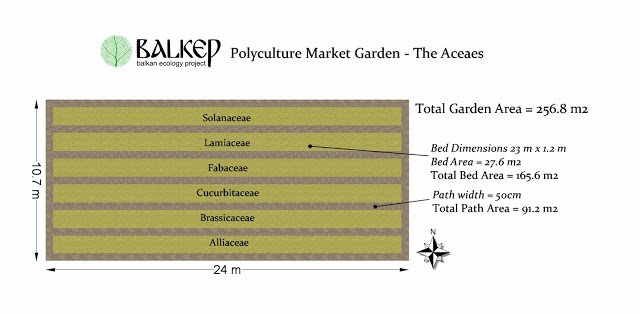
Study Area Path and Bed Layout
The beds are named after common vegetable families in order to familiarize participants with the use of Latin and introduce them to some major plants families. They do not correspond to what was planted in the beds.
The Polycultures
We are experimenting with many polycultures and have developed a categorization system for ease of reference. They are categorized by life cycle i.e annual, perennial or combi (annuals and perennials) and further categorized by function. i.e support, infrastructure or production. Often a polyculture will provide multiple functions, but the primary function is what sets them to each category. I give all the polycultures nicknames. For example, all polycultures in the annual and production category are named after Stoic Philosophers.
The study is based on polycultures Zeno and Epictetus - both are annual and production polycultures. As we are looking to see how polycultures compare to conventional growing we include a control for the Zeno polyculture i.e, the same crops from Zeno but planted in a more conventional block pattern. In the below illustration you can see the planting plan of the trial beds.
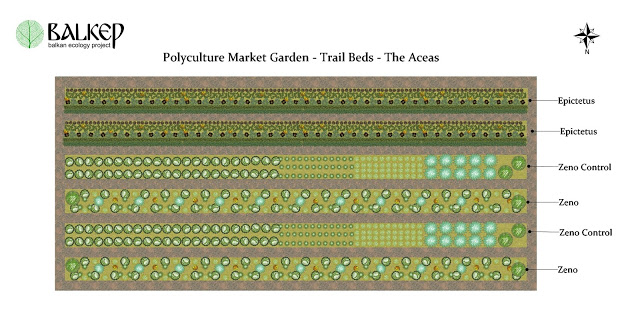
Polyculture Zeno
We've been growing Zeno in the garden for around 9 years now. It's been very successful in our home gardens and in 2015 we scaled it up for the market garden. You can see the last 2 year's market garden results here and three years of records from the home garden here.
Photos from Zeno Polyculture
For more info on plant spacing, management and maintenance of this polyculture see our previous post here.
Zeno Plant List - The following plants and cultivars were used in this polyculture;
Tomato - Solanum lycopersicum 'Paulina'
Tomato - Solanum lycopersicum 'Ukranian Purple'
Tomato - Solanum lycopersicum 'Marglobe'
Tomato - Solanum lycopersicum 'Rozava Magia'
French Beans - Phaseolus vulgaris 'Cobra'
French Beans - Phaseolus vulgaris - Local
Courgette - Cucurbita pepo 'Black Beauty'
White Bush Scallop - Cucurbita pepo
Broccoli - Brassica oleracea - 'Romanesco Ottobrino'
Broccoli - Brassica oleracea - 'Calabrese'
Butternut Squash - Cucurbita pepo 'Waltham Butternut'
Pot Marigold - Calendula officinalis
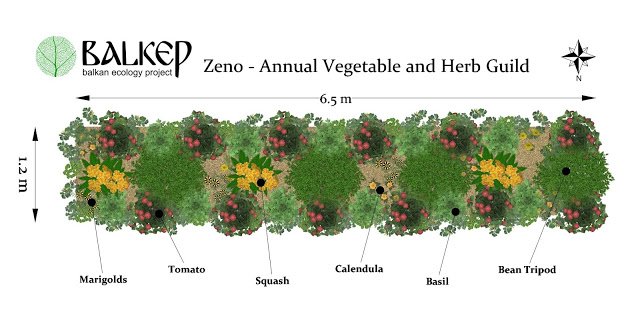
We usually grow our own tomatoes from seed and have around 10 cultivars but this year we lost all of our seedlings during a cold and windy spell so we bought them from the local market. Our Basil seedlings were also lost in the cold spell so we replaced the Basil with Broccoli. We did not record broccoli harvests in the records for Zeno or the Control.
Zeno Planting Scheme
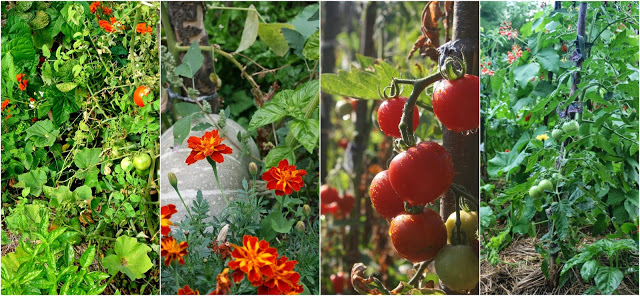
Zeno - Vegetable and herb polyculture/guild 6.5 m section of planting scheme
Zeno Control
The control includes all of the above plants but planted in blocks along the bed (see below). We want to see how the two planting schemes compare, i.e. whether the polyculture will produce more and the difference in the amount of time needed to cultivate them. The fertility inputs for both beds are the same.

Polyculture Epictetus
This is the third year we have tried this polyculture. It's basically a strip pattern of various vegetables from different plant families arranged to reduce pests and diseases, optimize space and nutrient share whilst respecting the individual plants needs for space and light.
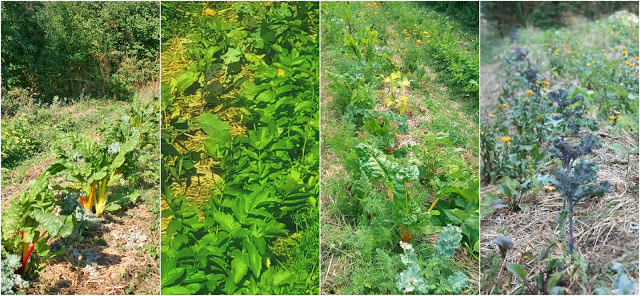
Epictetus Polyculture
Epictetus Plant List - The following plants and cultivars were used in this polyculture;
Beetroot - Beta vulgaris ' Bolthardy'
Dwarf Bean - Phaseolus vulgaris 'Rocquencourt'
Kale - Brassica napus 'Scarlett'
Parsnip - Pastinaca sativa ' White Gem'
Turnip - Brassica rapa subsp. rapa 'Milan White'
Swede - Brassica napus subsp. rapifera 'Marian'
Broccoli - Brassica oleracea - 'Calabrese'
Kohlrabi - Brassica oleracea 'Purple Vienna'
Pot Marigold - Calendula officinalis
Epictetus Planting Scheme
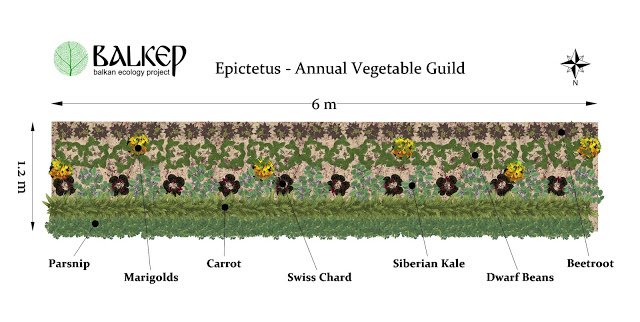
Example of Epictetus - Vegetable polyculture/guild - 6 m section of planting scheme
The table below shows the floral species composition of each of the beds including the different cultivars and the dates that the plants were sown or planted.
We have not included a list of native wild plants that are encouraged to grow around the perimeter of each bed that we mow and apply as mulch to the beds during the growing season.
What we Record - Inputs
Time Input - We record how long it takes to develop, maintain and manage the garden. The time is recorded for each task starting from sowing the seeds, preparing the beds, planting and caring for the plants, harvesting, preparing for market and packing away. The time taken for each task is rounded up or down to nearest minute. Nearly all of the records are based on 2 people carrying out each task unless otherwise stated in the record sheet.
Fertility Inputs - All fertility additives are recorded including; seed sowing mediums, composts, mulch, liquid fertilizers (comfert) and ash.
Gabriele and Marlene adding compost to beds
Financial Inputs - Costs - The costs associated with the garden are recorded. We do not cost the time spent on the garden but do provide the precise time the activities take. Set up and tool costs were included in the first year records. This year we only recorded operating costs.
N.B. We eliminate many costs by growing our own plants from seed, making composts and sowing mediums, growing summer and autumn mulch and saving seeds. We also provide our own support materials for the crops.
Beans germinated in flats
What we Record - Outputs
Crop Yields - All produce is weighed directly after harvest. The produce is recorded into two categories, fit for market and fit for processing.
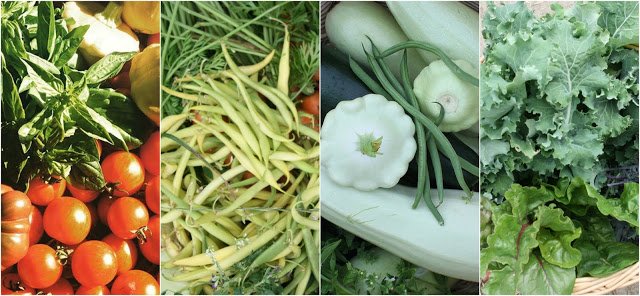
Polycultures Yields
Financial output - Profit - The market value of the produce is estimated based on the average prices we were receiving from local buyers, veggie boxes and Trustika buyers club in Sofia.
N.B. We do not sell all of the produce from the garden. Some of the produce is consumed by the team or preserved.
What we Record - Surveys
Soil Analysis - Each spring and autumn we obtain a soil sample and send it to NAAS of the Ministry of Agriculture and Food. To take a sample we take approx. a hand trowel full of the top 20 cm of soil from 8 random areas from the beds, mix it together and send 400g "bagged and tagged" to the lab the same day.
Physical Analysis - Each spring the team carry out a series of 9 tests that are designed to provide an indication of soil health based on observable physical properties of the soil. It's a soil management tool developed by farmers for farmers to track the developing health of soils. You can download the form with instructions how to carry out the tests here. We have slightly modified the test for our purposes.
Regenerative Landscape Design Course participants working through the soil health test cards
Invertebrate Survey - This year we were joined by Entomologist Chris Kirby-Lambert who undertook three surveys in the gardens. You can find his Outline of Invertebrate Diversity Monitoring Project here and we're hoping to see the results during the winter once the invertebrates have been identified and recorded. You can find photos from Chris's May Survey here.
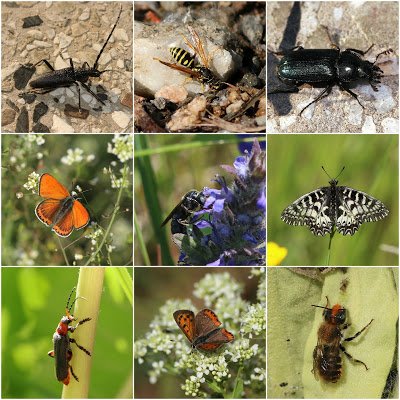
A sample of invertebrates from the gardens- Photos by Chris Kirby-Lambert
Results
We'll start off by looking at the results from the soil analysis and soil health tests, then look at the results for each polyculture and finally finish up with the overall garden results.
Soil Results - Mineral Analysis
Each spring and autumn we take soil samples and send them to NAAS of the Ministry of Agriculture and Food. The March sample is taken before we add any fertility and the November sample is taken after all of the crops have stopped producing.
The first sample taken in March 2015 in the table below is the base sample taken before work in the garden began.
2015
March (before adding compost) pH (KCI) N03N NH4N P205 K20
5.69 15.4 2.89 16.3 13
November (after final harvest) pH (KCI) N03N NH4N P205 K20
6.44 16.2 4.45 43.9 14.4
2016
Nitrogen mg/kg Phosphorous - Potassium mg/100g
March (before adding compost) pH (KCI) N03N NH4N P205 K20
6.65 4.43 5.79 88 25.2
November (after final harvest) pH (KCI) N03N NH4N P205 K20
6.61 8.17 3.83 44.1 22.1
2017
Nitrogen mg/kg Phosphorous - Potassium mg/100g
March (before adding compost) pH (KCI) N03N NH4N P205 K20
6.73 25.1 4.85 147 39.6
November (after final harvest) pH (KCI) N03N NH4N P205 K20
Soil Results - Soil Health Card
This year's soil health card test scored 65.6 - an increase from last year's base test of 58.9. The highest score obtainable for this test is 88.
You can find the full results from 2015 - 2017 in the spreadsheet 2017 Annual Polyculture Market Garden Study - Published Records - Sheet 6.Soil Test Cards
Should you wish to use this soil card you can download the Soil Health Card forms with instructions on how to carry out the tests here.
Inputs and Outputs - Epictetus
.jpg)
The total amount of time spent on Epictetus was 28 hrs. The time inputs are recorded into different categories as seen below.
Epictetus
Task Time in mins
Fertility 72
Planting /Sowing 458
Garden Care 481
Irrigation 330
Harvesting 170
Propagation 170
Total hrs 28 hrs
The fertility inputs on Epictetus were as follows:
Fertility Inputs Total Quantity
Mulch - Lawn Mower Clipping 540 L
Mulch - Spot Mulching 1 Bale
Wood Ash 6.720kg
Seedling mix for Beans 14 L
Compost planting out Kale 30 L
Compost for sowing beetroot strips 100 L
Seedling mix for Sowing Parsnips, Turnips, Swedes and Beetroots 75 L
Compost for Propagation 90L
Seedling Mix for Propagation 87 L
Compost added to beds 460 L
The yield outputs for Epictetus totaled 55.685 kg of produce. This translates to approx 1 kg per m2.
Crop Weight in g
Dwarf Beans (Fresh) 3095
Broccoli 2240
Kale 2820
Chard 1675
Beetroot 14545
Parsnip 14390
Kohlrabi 6460
Milan White Turnip 3630
Swede 6830
Total 55.685 kg
N.B At the time of publishing this post (11/11/17) there was still produce in the beds namely parsnips, swedes and kale, the yields of which have been estimated for these records.
Inputs and Outputs - Zeno
.jpg)
The amount of time spent on Zeno was 37 hrs and 5 mins.
Zeno
Task Time in mins
Set up 202
Planting /Sowing 296
Garden Care 508
Irrigation 330
Harvesting 646
Propagation 245
Total hrs 37 hrs 5 mins
The fertility inputs on Zeno were as follows:
Fertility Inputs
Item Total Quantity
Strawbales 31
Compost for
Tomatoes (L) 17.6 L
Seedling Mix
for Squash (L) 10.4 L
Seedling mix for Beans (L) 13.2 L
Wood Ash kg 6.72 kg
Mulch - Lawn Mower Clipping (L) 540 L
The yield outputs for Zeno totaled 154.429 kg of produce - 2.80 kg per m2.
Crop Weight in g
Tomatoes 63320
Tomatoes - (Processing) 12835
Beans 26465
Courgette 19319
Bush Scallops 30950
Winter Squash 1540
Total 154.429 kg
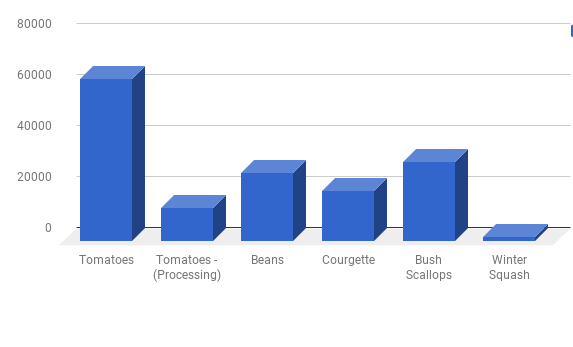
Inputs and Outputs - Zeno Control
The amount of time spent on Zeno Control was 37 hrs and 30 mins.
Zeno Control
Task Time in mins
Set up 168
Planting /Sowing 454
Garden Care 647
Irrigation 330
Harvesting 408
Propagation 245
Total hrs 37 hrs 30 mins
The fertility inputs on Zeno control were as follows:
Fertility Inputs
Item Total Quantity
Strawbales 31
Compost for
Tomatoes (L) 17.6 L
Seedling Mix
for Squash (L) 10.4 L
Seedling mix for Beans (L) 13.2 L
Wood Ash kg 6.72 kg
Mulch - Lawn Mower Clipping (L) 540 L
The yield outputs for Zeno totaled 140.670 kg of produce - 2.55 kg per m2.
Crop Weight in g
Tomatoes 62320
Tomatoes - (Processing) 13660
Beans 15295
Courgette 34565
Bush Scallops 12485
Winter Squash 2345
Total 140.670 kg
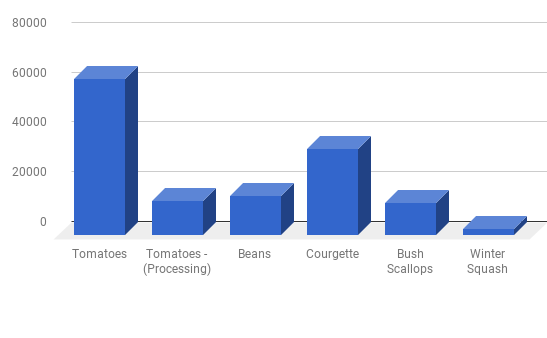
Some time categories were difficult to assign to each polyculture so I clumped them together into a general task category. It's mainly the time preparing the produce for market as well as soil analysis, initial propagation tasks and end of season tidying up and packing away of the garden.
General Tasks
Task Time in mins
Fertility 24
Analysis 20
Set up 180
Market Prep 2400
Mowing 360
Total hrs 49 hrs 45 mins
Zeno Polyculture vs the Control
.jpg)
So this year the polyculture marginally outperformed the control both in yield and in the time inputs. It's only the 2nd time we have tried this comparative study so it's too early to draw conclusions.
This year's results
Zeno Control
Total time 37 hrs 5 mins 37 hrs 30 mins
Total Produce 154.429 kg 140.670 kg
Last year's results
Zeno Control
Total time 38 hrs 37 hrs
Total Produce 130.08 kg 112.57 kg
You can find the above results in the spreadsheet 2017 Annual Polyculture Market Garden Study - Published Records - Sheet 9. Inputs and Outputs per Trial. For date stamped harvest records for Zeno see here and for Epictetus see here.
Inputs and Outputs - All Beds
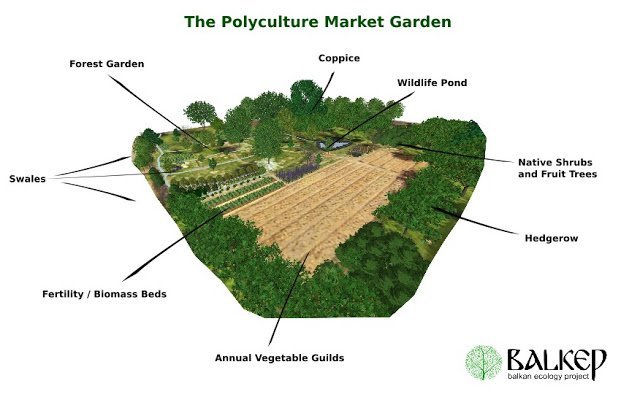
The amount of time spent on all beds was 152 hrs.
Time
Tasks Minutes Hours
Fertility 96 1.6
Analysis 20 0.3333333333
Set up 550 9.166666667
Market Prep 2400 40
Mowing 360 6
Planting /Sowing 1208 20.13333333
Garden Care 1636 27.26666667
Irrigation 990 16.5
Harvesting 1224 20.4
Propagation 660 11
Total time input 152 hours
.png)
% of 152 hours spent on various activities in the market garden.
The fertility inputs for all beds were as follows:
Fertility Inputs
Total inputs for garden
Strawbales 63 bales
Compost 1205 L
Wood Ash 20 kg
Sieved Compost
/River Sand 50 /50 224 L
Lawn Clippings 1620 L
The yield outputs for all beds totaled 350.78 kg of produce or 3.78 kg per m2.
Produce all beds
Product Weight in g Average weight in
g per m2
Dwarf Beans (Fresh) 3095 56.06884058
Broccoli 2240 40.57971014
Kale 2820 51.08695652
Chard 1675 30.3442029
Beetroot 14545 263.4963768
Parsnip 14390 260.6884058
Kohlrabi 6460 58.51449275
Milan White Turnip 3630 32.88043478
Swede 6830 61.86594203
Tomatoes 125640 1138.043478
Tomatoes - (Processing) 26495 239.990942
Beans 41760 378.2608696
Courgette 53884 488.0797101
Bush Scallops 43435 393.432971
Winter Squash 3885 35.19021739
Total kg 350.784 kg
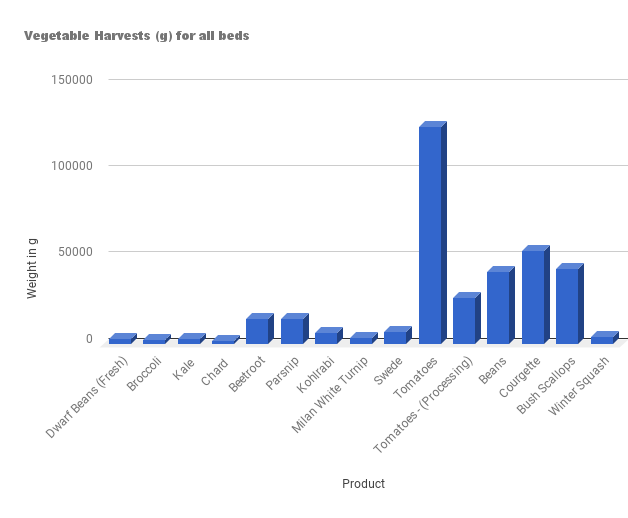
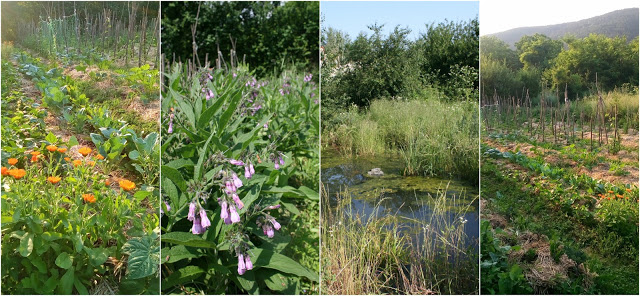
Some shots of the market garden
Results in Summary
The garden produced just under 351 kg of produce from a cultivated area of 165.6 m2.
The time spent on the garden was 152 hrs from sowing the first seeds indoors in February to packing up in late October.
The fertility inputs of the garden were 63 Straw bales, 1205 L of compost. 20 kg of wood ash, 224 L of sowing medium, 1620 L of lawn clippings.
Comments on Results
Time Input
Not included in the records were other tasks carried out around the site such as making compost, harvesting stakes and support sticks, establishing beneficial habitat such as wildlife ponds, hedgerows/stick piles.
The time for preparing the produce for market i.e quality control, packaging and delivery, was estimated at 2 hrs per week.
Financial Inputs - Costs
Not included here are the set up costs for the garden. These costs were included in last years results. The costs recorded here are the annual operating costs.
Financial Output - Income
A polyculture market garden should have a polyculture of revenue. Our study currently focuses on annual vegetable production. We chose to begin our study of annual vegetables as it is the most accessible practice to most people requiring the least amount of investment making it ideal for a novice or curious grower. Other potential revenue from the Polyculture Market Garden includes perennial crops (see here for a perennial polyculuture study we are starting), plant nursery, adding value to produce and courses and training. We plan to add a record of these activities in the future to represent better the financial potential of a Polyculture Market Garden.
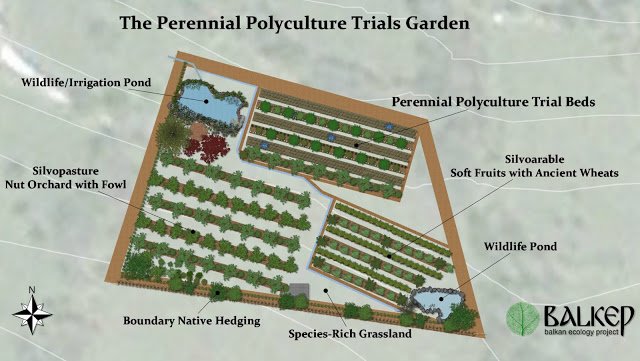
Design of our perennial polyculture garden,
Estimated Harvests
At the time of writing this report there are still crops growing in Epictetus. I estimated the harvest weights of the remaining crops based on what we had already harvested.
One of the Epictetus beds at the time of writing - Swedes and Parsnips are yet to be harvested and can remain in the beds until the new year. The kale we grow as cut and come again and there will be little to no growth until the temperatures drops to levels that will kill the plants, in warmer climes they will grow throughout the winter.
Crop failure :-
Our basil seedlings failed this year as did our tomato seedlings. In Zeno instead of basil we used broccoli although we did not include the broccoli in the harvest records.
The tomato plants we bought from the market and the cultivars were mixed up so we could not sow equal number of cultivars in each bed
A cold and wet April and May last year meant that many squash and beans did not germinate. This resulted in less production from beans and squash than would be expected. This year we grew these plants in starter trays under cover. Germination rates were not ideal and we were short of beans.
N.B. The majority of the tasks were carried out by a volunteer team that had little or no prior experience in horticulture. An experienced grower or with repeated experience of these cultivation methods should be able to reduce the task times significantly.
You can access the full spreadsheet here that includes all of the data entries and task descriptions. (note there are multiple sheets that can be accessed from the blue tabs running along the top of the sheet).
Why are we doing this research?
If you are reading this you're most probably aware of the environmental damage caused by industrial agricultural practices. We believe this damage is unnecessary, and aim to provide healthier models of agriculture that yield nutritious affordable food while at the same time promoting biodiversity and general ecosystem health.
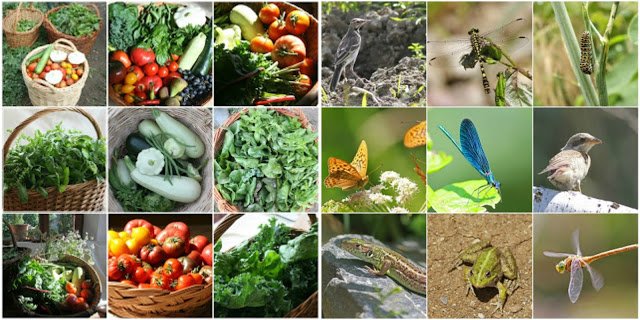
Polyculture gardens providing food for humans and other organisms
Industrial methods are heavily researched and funded, and there is a general belief among many farmers and growers that this is the only practical way of operating. Following 12 years of cultivating polyculture gardens we are seeing that small scale biologically cultivated polyculture gardens are a realistic and practical way of providing food for humans whilst preserving biodiversity and general health in the environment. Furthermore, we believe this type of agriculture can help create thriving local economies that strengthen community, provide dignified work and enhance the amenity value of an area.
Little data exists showing the productive capacity of polyculture systems and the economic viability of them. There is a big need to fill this gap and provide solid data and concise coherent models that can be replicated easily and provide real solutions to the environmental damage caused by industrial agriculture. This project intends to go some of the way in filling this gap.
We aim to address the following questions;
How productive can polycultures be?
What advantages can polycultures provide ?
How much time do polyculture gardens take to establish and manage?
How economically viable are these gardens?
How bio-diverse can our food producing systems be?
Can we provide clean, nutritious, affordable food whilst enhancing biodiversity?
Want to get involved? Sharing, Feedback and Collaboration
We have our record keeping spreadsheets on Google Drive. These spreadsheets (see here) include all of the data entries and task descriptions (note there are multiple sheets that can be accessed from the blue tabs running along the top of the sheet). If you would like to keep your own records we'd be happy to give you a copy of the spreadsheet, just drop us an email or leave a comment below with your contact details and we will send it over to you.
If you have any suggestions and feedback on how you think we could improve the study or you have heard about or practice similar studies on other guild/polycultures we'd love to hear from you.